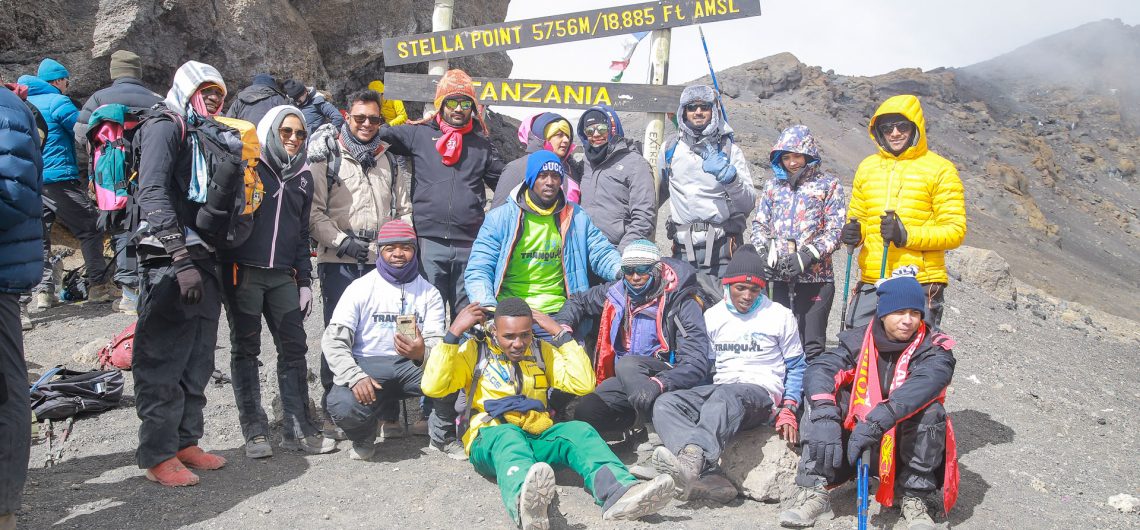We are not claiming to be the best Mount Kilimanjaro trekking company and tour operator in Moshi – Tanzania but we have learned some lessons or two about the relationship between business and climbing Kilimanjaro. The highest point in Africa and the only freestanding mountain in the world is Kilimanjaro, a dormant volcano in Tanzania. I constantly go above the limits I set for myself, both professionally and emotionally. Additionally, I’ve discovered that exercise helps me think clearly both inside and outside of the office. I made the life-changing decision to climb Kilimanjaro a few years ago for this reason. For me, the trip to experience the mountain served as a reminder of numerous important business principles, which I frequently put into practice in my role as CEO of Tranquil Kilimanjaro, a trekking company that is striving to be the best in guiding successful climbs in Tanzania and East Africa as a whole.
Read about Tranquil Kilimanjaro, one of the best Kilimanjaro tour operators.
The effectiveness of steady, gradual progress
One foot in front of the other was my straightforward method for staying focused despite the extreme altitude, abrasive weather, and tiredness.
A marathon is required to climb any of the Seven Summits, including Kilimanjaro. Running a business needs careful long-term dedication, just like this. Just like climbing Mount Kilimanjaro takes time, building a successful business also takes time.
You won’t get quick pleasure by climbing Kilimanjaro or running a business if you’re looking for it. Instead, take the “pole pole” route, which means “slowly, slowly” in Swahili. Local mountain guides frequently use this term. My colleagues and I were anxious to act at the summit yet patient to wait for outcomes. This is the same principle I use to operate Tranquil.
For instance, our teams at Tranquil Kilimanjaro have been establishing the framework for a number of significant acquisitions over the past few years.
Years of planning, strategy, and cooperation went into these corporate transactions. Acquisitions of businesses take time. The “results” of an acquisition or any long-term initiative don’t happen right away; instead, they often materialize after all the work has been done. However, they do demand ongoing effort. As a consequence, it’s crucial for leaders to keep their staff motivated and eager to act, even when the effects of their efforts take months or years to manifest.
The more you succeed, the more obstacles you’ll have to face.
As you might expect, climbing Mount Kilimanjaro becomes more difficult as you ascend. The gradient gets steeper, the climate gets nastier, and the oxygen levels drop.
Additionally, as your business grows, you’ll almost certainly have to deal with more rivals, adopt cutting-edge trends and technology, and adhere to increasingly stringent rules.
You must exert more effort and give self-improvement top priority in order to maintain momentum, both on Kilimanjaro and in the boardroom. You’ll notice that as the hours go by while you’re ascending, you’re working harder. Similar to this, as each quarter or fiscal year goes by, you’ll see that more creativity, hard work, and skill are required to drive a company toward year-over-year success.
Failure is probably just around the corner if you’re not working and developing because you think you or your business have already succeeded. The easiest places to get comfortable are in senior leadership roles, but if you get too comfortable, you’ll lose.
The trick is to resist getting comfortable. True, long-term company success is forged by leaders who never lose their hunger.
Related: Brooke Baldwin climbs Kilimanjaro and comes back with 10 life-changing lessons
Although you can’t plan for everything, you can always be ready for everything.
Most individuals have a strategy in place before attempting to climb Kilimanjaro. It frequently contains the route they’ll follow, the duration of their trip, and the climbers they’ll be climbing with. Once they have a strategy in place, they assemble the necessary trekking equipment and supplies and start their ascent to the top. While planning all of this is essential, it is insufficient on its own. A mountain like Kilimanjaro requires a lot of preparation, so be ready for everything.
You must be equipped to climb for a whole day on two hours of sleep, endure subzero conditions, and ascend to elevations where there is a 50% reduction in oxygen. Even though it’s hard to plan for every conceivable contingency, you can be ready. This idea also applies in the corporate world. Although you won’t always have a plan in place as a leader, you can be ready by being proactive, communicating often, and keeping your employees flexible.
There is no way to have all the knowledge required to create a strategy before the unexpected happens. I knew going up Kilimanjaro that I couldn’t eliminate all danger and that I would probably have to make some tough choices.
The same idea has been adopted by me in business. Since you must make difficult judgments because you are a leader.
You may plan as much as you like, both in a conference room and on Kilimanjaro, but you will probably need to change course when new information becomes available. You’ll have to be willing to adjust your original idea. Failure can come your way if you choose rigidity above flexibility. Therefore, it is your responsibility as leaders (or hikers in this case) to respond quickly in the face of uncertainty.
![]()


Comments